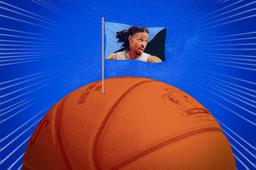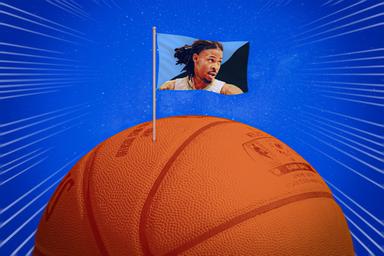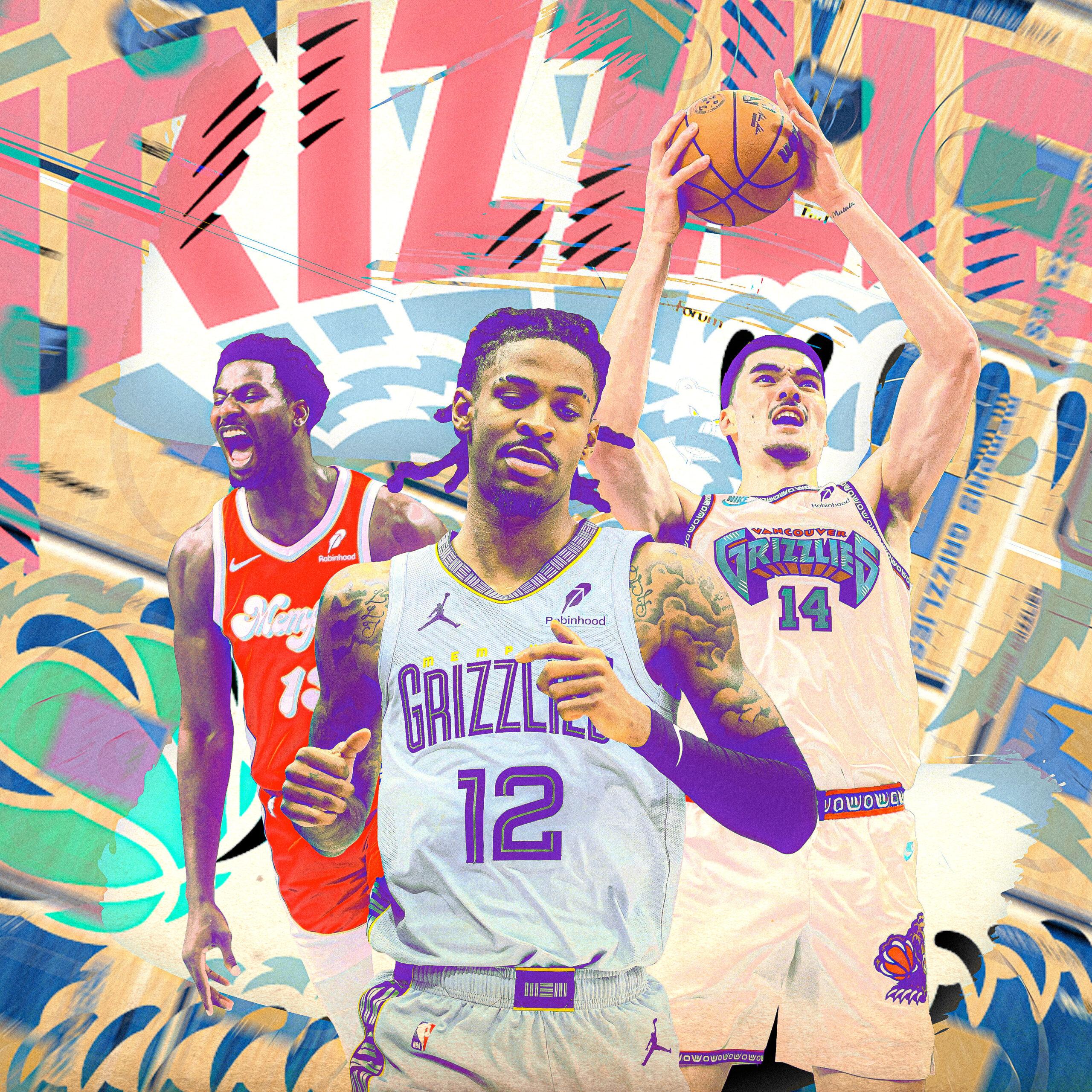
Visualizing the archetypal play in today’s NBA is easy. A point guard crosses half court with three shooters spread out beyond the 3-point line, as a big man comes up to set a pick. The screen connects, the big man rolls, and the point guard drives and kicks out to a teammate, who lets it fire from deep. You’ve seen it a million times. This isn’t actually the majority of NBA plays—Boston is the only team that takes more 3s than 2s—but it can sometimes feel like it, or, at least, it can feel like it to critics who bemoan the homogeneity that has infiltrated the league.
But there’s a salve for such grumbles: Anyone worried about stylistic sameness just needs to watch more Memphis Grizzlies games, and all their concerns will be erased.
Memphis is wild, wacky, and wonderful, fueled by the most unique game plan in the NBA. Even though they’re led by a gifted, hyper-athletic point guard, the Grizzlies rarely run that typical spread pick-and-roll. Instead, they’re forging their own identity, deploying a breakneck style that has propelled them to the third-best record (25-15) in the West and the fourth-best net rating (plus-6.9) in the NBA.
A decade ago, the Grizzlies were Grit and Grind bruisers amid a league of highfliers. Now, they’re outliers again, just with Ja Morant and Jaren Jackson Jr. leading the way instead of Zach Randolph and Marc Gasol.
Appreciating these Grizzlies requires attention to the movement of all five players throughout a possession, not just the end result; in the words of Victor Wembanyama’s favorite author, journey before destination. In fact, the Grizzlies shoot from the same areas of the floor as any other NBA team …
Grizzlies Shot Distribution
… but how they produce those shots is entirely different. They rank last in picks and last in handoffs but first in spot-up attempts and first in drives. They move like track stars—they’re first in transition attempts, first in pace, and the fastest to shoot after both rebounds and opponent makes. And if at first they don’t succeed, they crash and crash again, ranking second in offensive rebounds.
“They run an unconventional offense. … What they’re doing is weird,” Draymond Green said after facing (and being ejected against) Memphis in November. “In the NBA, most rotations and patterns are pretty similar. What they’re doing is, like, I haven’t seen it.”
What they’re doing is manipulating space and moving all five players in concert, like a hardwood version of Ender Wiggin’s Dragon Army. (That’s a Stormlight Archive reference and an Ender’s Game reference within the span of a few paragraphs, if you’re keeping track.) The Grizzlies lead the league in every single statistic on the NBA’s “speed and distance” page: They move the most and the fastest on both offense and defense; compared to the last-place Celtics, the Grizzlies collectively run an extra 2.4 miles per game. It’s no wonder that none of Memphis’s players average more than 29 minutes—they need the rest!
Perhaps the most remarkable aspect of this style, which has yielded the league’s no. 5 offensive rating, is how Morant fits into it. I initially wanted to write this story back in November, around the time of Draymond’s quote, but Morant had missed a bunch of games and I wanted to ensure this style of play wasn’t an anomaly the Grizzlies were implementing to account for his absence. But the pattern has persisted even with Morant back in the lineup.
Morant uses just 10 pick-and-roll possessions per game that lead to a shot, foul, or turnover for himself or a teammate, according to Synergy Sports. That ranks 45th in the league, well behind other elite lead guards.
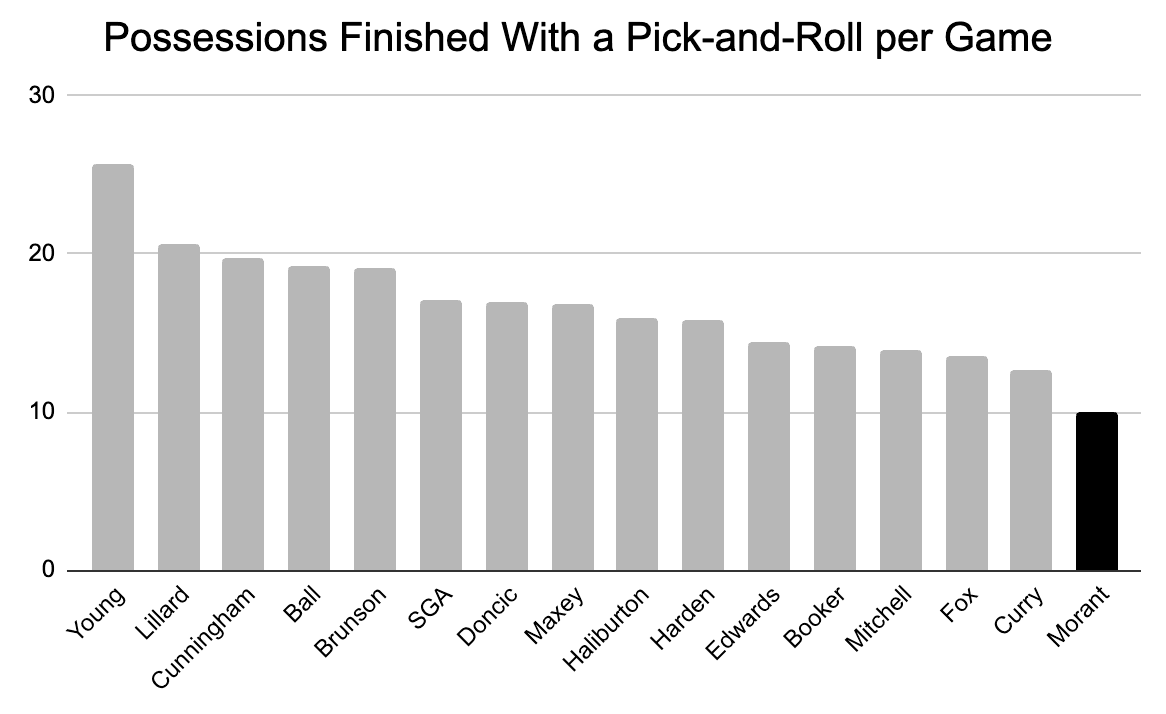
Not only is this style unusual for a top guard, but it’s also a marked change from Morant’s own pick-powered past. In each of his previous seasons, the Grizzlies guard ranked near the top of this pick-and-roll usage leaderboard and generated about half of his offense from that play type—but that’s been cut in half in 2024-25.
Ja Morant’s Pick-and-Rolls
The result is by far the most unique viewing experience in the league. This graph ranks the 30 teams by what I’ll call “offensive style uniqueness,” which is basically a measure of the unconventionality of each team’s approach with the ball, based on a variety of advanced metrics and tracking stats that measure what happens before a shot goes up. Ignore the actual scores and focus on the order: Higher scores mean a more unique style, while lower scores mean a more typical style for how the league plays in 2024-25. There’s a huge gap between the Grizzlies and everyone else.
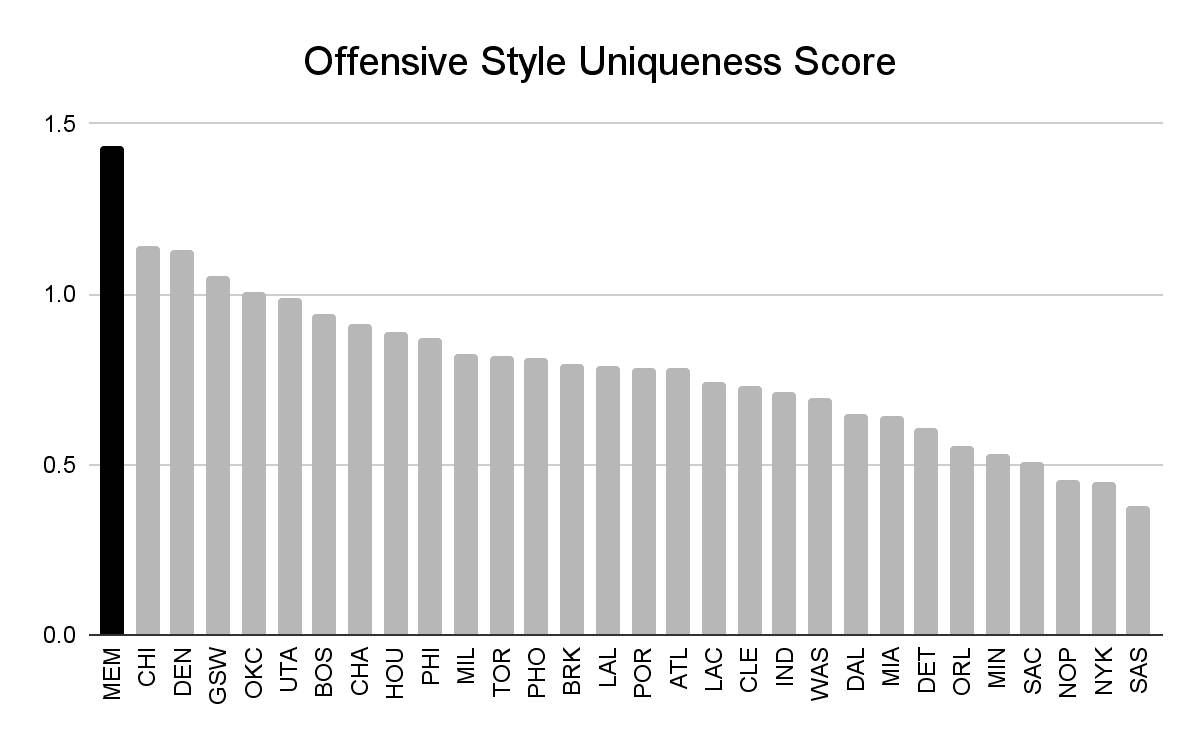
Memphis isn’t merely a much-needed breath of fresh air, though—this style is powering a tremendous turnaround in the standings. The Grizzlies finished 27-55 last season, with the worst point differential since their first season in Memphis, all the way back in 2001-02. Injuries were the chief culprit: Grizzlies players missed a combined 577 games due to injury, according to Spotrac, which was 207 more than second place, and the team set NBA records for the most players used (33) and the most different starting lineups (51).
But coach Taylor Jenkins wasn’t content to bank on better health this season; he knew that even when they were whole and making the playoffs in previous seasons, the Grizzlies had one major weakness. Memphis could score when it got out in transition but perennially ranked as a bottom-10 team in half-court efficiency, per Cleaning the Glass. With this new strategy, however, the Grizzlies are still leading the league in transition points and also posting their best half-court numbers in the past decade:
Grizzlies Offense
Memphis’s rejuvenation is a credit to improved health, Jenkins’s singular schemes, and the front office’s pursuit of excellent depth, from undrafted Lakers castoff Scotty Pippen Jr. (now one of the best backup point guards in the league) to second-round rookie Jaylen Wells (perhaps the best rookie in the league this season) to a collective of five different big men who can mix and match, each bringing different strengths and styles.
That group includes rookie Zach Edey, the NBA’s tallest player. It includes Brandon Clarke, who isn’t the same über-efficient role player he was before tearing his Achilles but who remains a solid contributor. It includes Jay Huff and Santi Aldama, who—well, here are the top six leaders in 3-point percentage among players who are at least 6-foot-11, according to Stathead:
- Nikola Jokic (47 percent)
- Karl-Anthony Towns (45 percent)
- Evan Mobley (42 percent)
- Jay Huff (41 percent)
- Santi Aldama (39 percent)
- Kevin Durant (39 percent)
But the best of the bunch is Jaren Jackson Jr., who experienced growing pains as a de facto no. 1 option in Morant’s absence last season but is reaping the rewards as a more natural no. 2 a year later. Jackson is now combining that increased volume with his prior efficiency, to the point that his scoring numbers resemble those of a couple of the NBA’s best bigs:
Jaren Jackson Jr. Vs. Two Elite Bigs
That isn’t to say that Memphis profiles as a playoff favorite. The team’s injury problems haven’t disappeared, with Morant appearing in only 23 of 40 games thus far and Marcus Smart missing more than half of the season. And the Grizzlies might not remain in the third spot in the Western standings: Even after a brutal recent stretch of games—they’re 4-5 in their past nine contests, all against Western Conference contenders—they’ve played the easiest schedule of any Western team thus far, and their remaining schedule is the conference’s second-most difficult.
And if the Grizzlies offense is currently succeeding in part because its unconventionality takes defenses by surprise, it might falter in the postseason, when opponents can focus their game-planning on multiple matchups in a row. The Grizzlies already tend to struggle against opponents that can use their strength and size to gum up Memphis’s motion machine. “I think overly physical teams have been a problem for us,” Aldama said after a two-point loss on Monday that dropped the Grizzlies to 0-3 against Houston this season.
That’s one reason they’re searching for a meaningful upgrade at the trade deadline. The Grizzlies have plenty of future picks and midsize contracts they can deal, and they reportedly came close to acquiring Dorian Finney-Smith before the Lakers won his services. Another wing in that mold would make a lot of sense; on the high end, they could ignore Jimmy Butler’s wishes and push for the disgruntled Miami star, though Butler’s slow, methodical offense might have been a better fit for the Grit and Grind Grizzlies than the current version.
But Memphis’s ultimate outcome this season rests on Morant, who, in symbolically Grizzlies fashion, represents a different era of basketball than other contemporary stars. It’s unclear whether his particular blend of strengths and weaknesses can work in the playoffs. To test this idea, I examined the starting backcourts for every NBA champion this century. From 2000 through 2014, it was common for slashing guards with iffy jumpers to succeed. Dwyane Wade, Tony Parker, and young Kobe Bryant all starred for title-winning teams while making fewer than 30 percent of their 3s, and supporting guards such as Rajon Rondo and Richard Hamilton were below that threshold, too. On average, the starting guards for NBA champions in that span made 34 percent of their 3s in the seasons that they won.
From 2015 (the first Warriors title) through 2024, however, every starting guard for a championship team was a threat from deep. Those guards made 40 percent of their 3s, on average. Only one of them shot worse than 35 percent from distance, and even that was a fluke: Kyrie Irving sank just 32 percent of his 3s in the 2015-16 regular season, before rebounding to 44 percent in the playoffs—including one very important triple.
Morant doesn’t come close to those recent precedents. He’s a career 31.8 percent 3-point shooter, and even that mark might oversell his proficiency. Over the past three seasons, Morant is down at 30.4 percent—the second-worst mark among 185 players with at least 450 attempts over that span, only narrowly ahead of Russell Westbrook.
To be fair, Morant hasn’t suffered in his previous stints in the playoffs, where he’s averaged an electric 27 points per game. But while Morant’s made just 30 percent of his pull-up 3s in the regular season, according to an analysis of NBA Advanced Stats data, he’s up at 45 percent in a much smaller sample in his postseason career. Maybe he has a secret postseason power-up—or maybe playoff defenses will be able to stymie him by letting him shoot and waiting for his jumper to return to career norms.
Yet at the same time, Memphis isn’t asking Morant to be the same sort of pick-and-roll pull-up threat as so many other championship-level lead guards across the NBA. The Grizzlies seek other ways to score, from both Morant and his teammates. That diversity helps Memphis put on a nightly show unlike any other.

